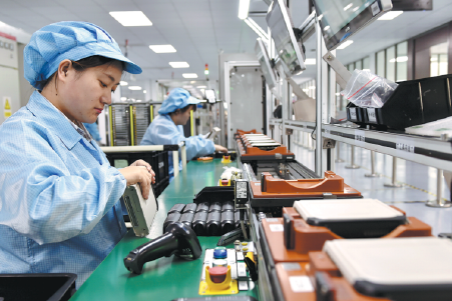Autonomous taxi market set to rev up


The market size of China's self-driving taxi services is expected to surpass 1.3 trillion yuan ($203 billion) by 2030, accounting for 60 percent of the country's ride-hailing market by then, said a report by global consultancy IHS Markit.
The report said the major market potential for autonomous vehicles in the future will ride on the promotion of business models such as robotaxis in mobile travel scenarios.
In the next 10 years, the continuous increase of new energy vehicles and the popularization of private cars will promote the development of the overall shared mobility segment.
The revenue of China's ride-hailing sector is projected to rise to 862 billion yuan in 2025 and 2.25 trillion yuan in 2030, with a compound annual growth rate of 28 percent, the report added.
It is noteworthy that the robotaxi market will eventually be dominated by two to three major service providers, with the top providers occupying more than 40 percent of total market share. Chinese tech companies including Baidu Inc, Didi Chuxing and Pony.ai have invested heavily in autonomous driving.
The report said the penetration rate of new cars with autonomous driving functions above Level 2 will reach at least 45 percent in 2025, and top 80 percent by 2030.
Autonomous driving is categorized from Level 1 to Level 5; the higher the level, the more intelligent the technology. Level 2 means the car can do the steering and acceleration, but the driver must still be ready to take the wheel.
Justin Hu, a senior analyst at IHS Markit, said the higher the level of autonomous driving, the higher the requirements for chip computing power, lidar accuracy and self-driving algorithm design, and all of these result in hefty cost rises.
The assembly cost of an L4 self-driving vehicle is the main bottleneck, and how to strike a balance between the effectiveness and cost of core components of autonomous driving will be one of the goals for development over the next decade, the report added. L4 automation means the car can drive by itself under most circumstances without a human backup driver.
China aims to realize scale production of vehicles capable of conditional autonomous driving and commercialization of highly autonomous vehicles in certain circumstances by 2025, according to a blueprint issued by the National Development and Reform Commission, the Ministry of Industry and Information Technology and nine other ministries.
Yang Diange, dean of the automobile engineering department at Tsinghua University, said L4 self-driving technology will first be deployed in taxis and trucks and in some designated areas, and large-scale application of such technology in private vehicles might be seen by 2030.
Tech giant Baidu has taken the lead in launching self-driving taxi services in a bid to speed up the process of making autonomous driving technology commercially viable.
To date, Apollo Go robotaxi services have been launched in the cities of Changsha, Cangzhou, Beijing, Guangzhou and Shanghai, allowing Baidu to become the autonomous driving technology company with the most widespread operations in China.
The company plans to expand its robotaxi ride-hailing services across 30 cities in China within two to three years to serve a wider range of users, said Robin Li, co-founder and CEO of Baidu.
In August, the Beijing-based tech behemoth unveiled its first Level 5 self-driving robocar with no steering wheel, and an upgraded autonomous driving service platform named Luobo Kuaipao. By the end of September, Baidu's robotaxi has provided more than 400,000 rides, with the testing distance exceeding 16 million kilometers.
In addition, Baidu and Pony.ai, a self-driving startup, were given the go-ahead in Beijing to conduct driverless tests on designated public roads without safety drivers in October.
The test area covers 20 square kilometers in the Beijing Economic-Technological Development Area, also known as E-Town, in Daxing district, with more than 100 km of city roads. Major subway stations, residential areas, and tech parks are in the vicinity.




































